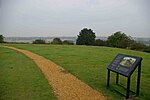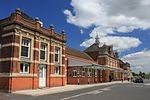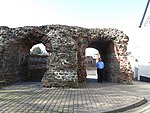St Helena School, Colchester
1938 establishments in EnglandAcademies in EssexEducational institutions established in 1938Schools in Colchester (town)Secondary schools in Essex ... and 1 more
Use British English from February 2023

St Helena School is a coeducational secondary school with academy status, located in Colchester, Essex, England. The school is situated on Sheepen Road opposite Colchester Institute.
Excerpt from the Wikipedia article St Helena School, Colchester (License: CC BY-SA 3.0, Authors, Images).St Helena School, Colchester
Sheepen Road, Colchester
Geographical coordinates (GPS) Address Phone number Website External links Nearby Places Show on map
Geographical coordinates (GPS)
| Latitude | Longitude |
|---|---|
| N 51.895202 ° | E 0.888474 ° |
Address
St Helena School
Sheepen Road
CO3 3LE Colchester
England, United Kingdom
Open on Google Maps








